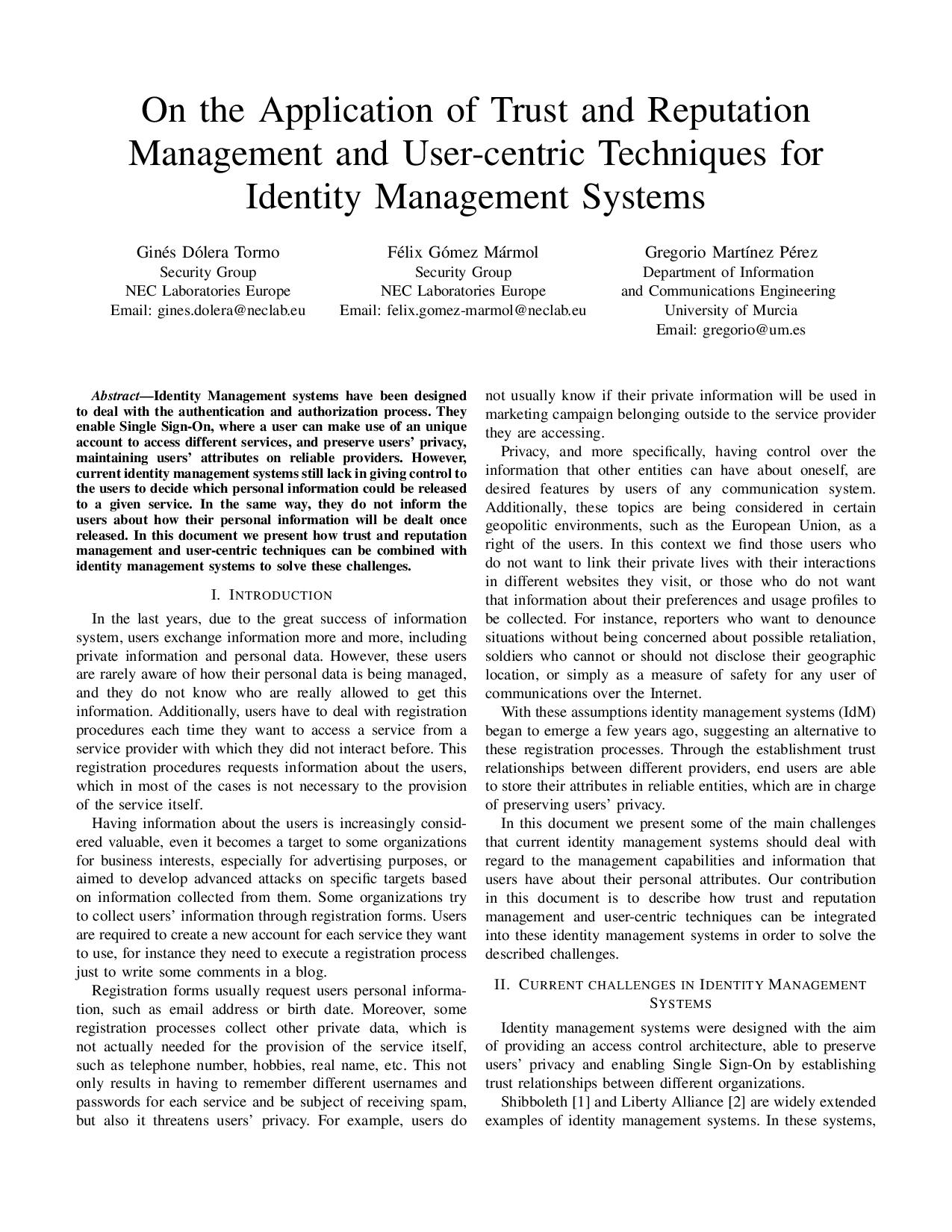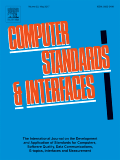Identity Management systems have been designed to deal with the authentication and authorization process. They enable Single Sign-On, where a user can make use of an unique account to access different services, and preserve users’ privacy, maintaining users’ attributes on reliable providers. However, current identity management systems still lack in giving control to the users to decide which personal information could be released to a given service. In the same way, they do not inform the users about how their personal information will be dealt once released. In this document we present how trust and reputation management and user-centric techniques can be combined with identity management systems to solve these challenges.
On the Application of Trust and Reputation Management and User-centric Techniques for Identity Management Systems
Publication year: 2012
Abstract
Related Publications
Co-Authors
This work would not have been possible without the inestimable contribution of:
- Ginés Dólera Tormo
- Gregorio Martínez Pérez
Citation
Ginés Dólera Tormo, Félix Gómez Mármol, Gregorio Martínez Pérez, «On the Application of Trust and Reputation Management and User-centric Techniques for Identity Management Systems«, XII Spanish Meeting on Cryptology and Information Security (RECSI 2012), San Sebastian (Spain), 04-07/09/2012
Conference Details
- Website: XII Spanish Meeting on Cryptology and Information Security (RECSI 2012)
- Date: 04-07/09/2012
- Venue: Palace of Miramar, San Sebastian (Spain)





